As salespeople, we all want to close sales. So, when you miss those big opportunities—when prospects hang up the phone, or slam the door in your face—don’t you want to know why you lost the business?
If you’re willing to dig deep to discover the answer, I have good news for you:
You’re going to learn how to close a sale.
But if you just want a feel-good answer that takes away the blame, then you’re destined to keep losing sales.
Hopefully this doesn’t describe you.
In fact, if you keep reading this, I’m willing to bet you’re the type of salesperson who wants to learn how to close a sale by taking a close, hard look at why clients don’t buy from you.
According to data published in Harvard Business Review, the percentage of salespeople making quota at some organizations was as low as 35% in the past few years.
It’s no surprise, then, that salespeople are always asking me how they can get more people to buy from them.
But only a select few think to ask the real question: “What’s actually causing clients not to buy from me?”
Understanding the reasons why clients don’t buy from us is critical to learning how to sell anything to anyone.
Once you change those behaviors that are costing you sales, you lay the groundwork for closing more sales. It really is as simple as that.
In this video and article, I’m going to show you exactly how to close a sale by understanding the top 7 reasons why clients don’t buy from you.
The #1 Key to How to Close a Sale

Discovering the mistakes you’re making is the first step.
Over the years, I’ve worked with thousands of salespeople. Many of them make the same request: “Marc, please teach me exactly how to close a sale.”
Now, most of these salespeople come to me after years of struggling in sales.
But others find sporadic success—sometimes they land huge deals, while other times the door gets slammed in their face.
However, one thing these salespeople all have in common is that they are not sales superstars when they ask for my help.
By “not superstars” I mean that they aren’t the top-performing salespeople at their organizations.
Unless you are literally the top-performing salesperson at your company, or in your industry, then you can’t just flip a switch and suddenly know how to close a sale every time.
First, you need to understand why you’re not closing sales in the first place.
That’s why, in teaching salespeople how to close a sale, I always start with the same approach: “I can’t teach you how to close a sale until I know what you’ve been doing wrong.”
This is key.
If you try to learn how to close more sales without taking a close look at what you’re already doing on a day-to-day basis, then you’re missing the point.
In fact, the #1 key to how to close a sale is to figure out what selling mistakes you’re making—and then eliminate them from your strategy.
If this sounds simple, that’s because it is.
When we try to get fancy, silver-bullet answers to our problems in sales, it never turns out well.
It’s always the best approach to take a step back, take stock of your daily selling habits, and then create a plan from there.
This article is the launching pad for any salesperson who wants to do just that.
Keep reading to find out the 7 most common reasons why clients don’t buy from you—so you can put a stop to these behaviors and start learning exactly how to close a sale, every time.
#1: Don’t sell to the wrong people.

Selling to the right people is critical when it comes to closing the sale.
This might sound obvious, but selling to the wrong prospects is actually the number one reason why clients don’t buy from you.
If you’re selling to the wrong people, you’ll simply never learn how to close a sale.
This point comes first because it’s so darn important—and it’s killing so many salespeople out there.
There’s a natural desire for many salespeople to sell to the most obvious and willing prospect. But if you truly want to learn how to close a sale, you need to banish this from your mindset.
The easiest person to sell to isn’t necessarily the person who has access to big budgets, or the prospect who can really make a decision.
Those high-level decision makers should be your primary focus.
Ideal prospects aren’t always the most obvious or easiest to close—but they’ll be worth your while, and once you master selling to them, you’ll close the deal every time.
So make sure that you weed out those wrong people and only spend your time with the right people.
#2: Don’t be enthusiastic.

That typical sales enthusiasm is turning prospects off, left and right.
Imagine that you answer the phone and someone on the other end says, “Hey, there! How are you doing today?!”
How would you feel?
Or, imagine that you’re in a buying situation and you tell the salesperson what you’re looking for. The salesperson responds with, “Of course I can help with that! We have the best solutions of anyone out there!”
How would you feel?
In both cases, I’m willing to bet you’d feel uncomfortable.
Very uncomfortable.
Your walls would go up. Your salesperson radar would go off, and you’d be thinking to yourself, “Oh no, here we go again…how can I get out of this as quickly as possible?”
Most salespeople are way too enthusiastic and it makes them come off as incredibly salesy.
When you do this, it turns prospects off immediately.
It’s time to drop the enthusiasm and instead act more like a doctor who’s simply just trying to understand what’s really going on in your prospect’s world.
This is absolutely critical to how to close a sale.
#3: Stop pitching.
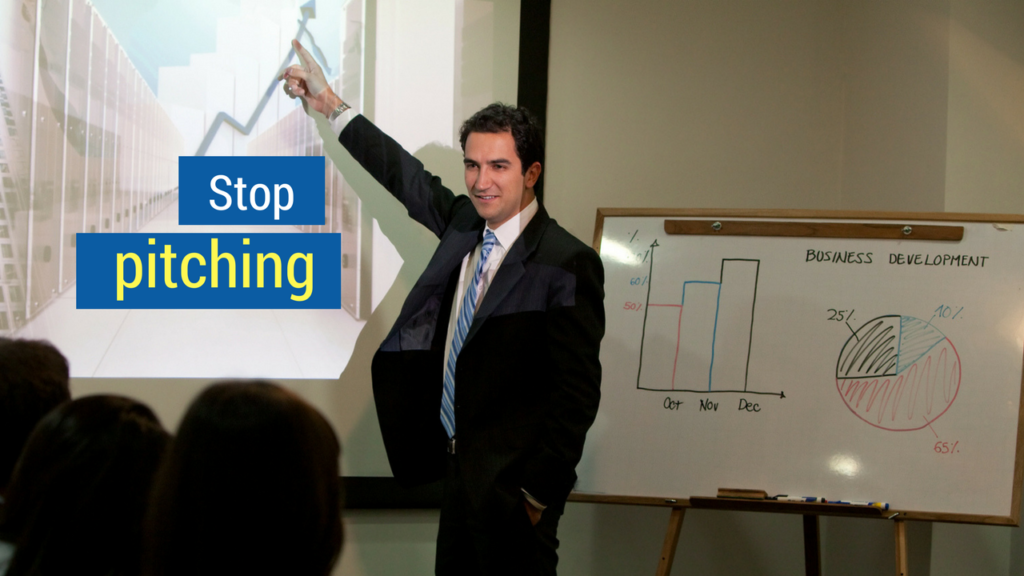
The tired sales approach of pitching your product is a relic of old-school selling.
Have you ever caught yourself doing most of the talking in a selling situation?
If so, then you were pitching.
And your prospect was probably tuning out.
Why? Because prospects today hate the pitch. Not only is it old-school and salesy, but it’s also boring and frustrating.
Listening to a salesperson’s pitch it like struggling to stay awake through a tedious lecture in college or high school.
To become a master at how to close a sale, you need to learn how to build a deep connection with your prospects.
The first step is to stop pitching.
You must realize that prospects want to be engaged in a dialogue, not listen to your monologue.
Start to bring yourself back to engaging prospects throughout every conversation.
If you feel yourself doing most of the talking, remind yourself to talk less in order to engage your prospects more.
#4: Discover prospects’ challenges.

Dig deep to find out what’s going on in your prospect’s world.
Most salespeople focus on why prospects need their offering. They’re trying to persuade.
But there’s one massive problem with this: Prospects really don’t care about your offering.
They don’t care about all the cool features and benefits you have to offer. All they care about is solving their most pressing challenges.
This is why, as salespeople, we need to understand what’s really going on with our prospects if we want to figure out how to close a sale.
That means digging deep to discover your prospects’ biggest frustrations and greatest obstacles to success.
You need to get to the key challenges that prospects are facing in order to show them how they will actually be solved.
#5: Get clear on upside value.

If you can’t figure out the upside, neither can your prospect.
Have you ever been in selling situation where it seemed like you had a strong relationship with the prospect—but you still couldn’t close the sale?
If a prospect ultimately does not buy from you, even when you’ve established a great connection, it’s because the value of making an investment in your offering is not clear.
That’s why it’s imperative that you get clear on upside value in order to master how to close a sale.
You can avoid losing these clients by helping your prospects clarify the upside value of working to solve their challenges.
Ask your prospect a question like this: “What would it mean to your company in additional revenue or profit if you were actually able to solve these challenges?”
By getting a dollar figure, you get the prospect to see the value through his or her own words.
Once this happens, your chances of closing the sale go up many times over.
#6: Talk budget.
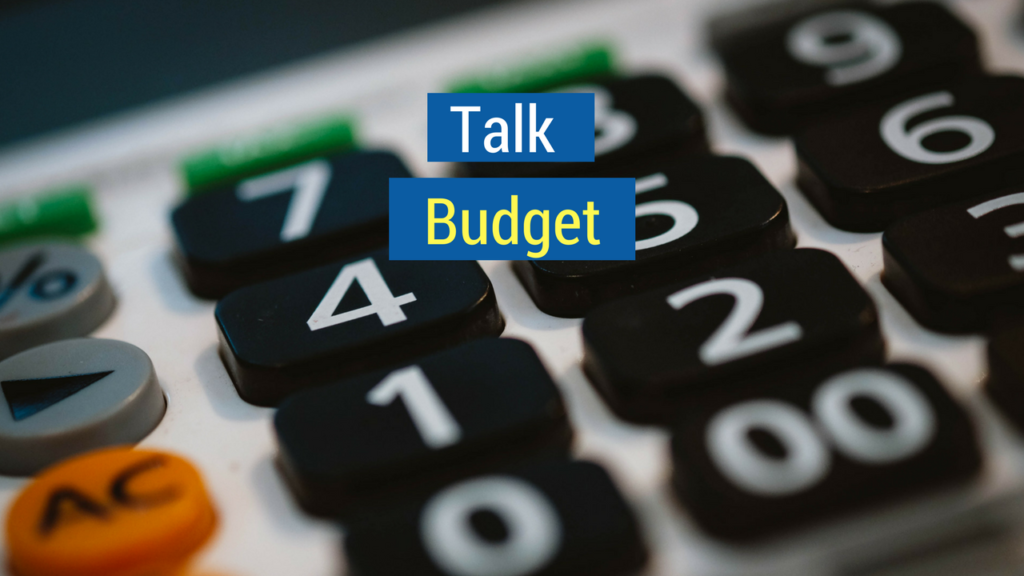
Shed your fear of talking budget if you want to learn how to close a sale.
Salespeople always get so uncomfortable talking about money in selling situations. But this irrational fear of establishing budget is quickly killing sales in all industries.
Why? Because budget is absolutely critical to learning how to close a sale in any situation.
If you don’t know your prospect’s budget, you can’t sell effectively. Period.
In selling, you must talk about money with prospects before presenting the solution. Every single time.
Without discussing money up front, you have no idea if you’re even on the same page about money. Get the budget before you present your solution.
#7: Schedule that next step.

Scheduling a clear next step should be par for the course in every sales interaction.
Have you ever been in a selling situation where everything was going well—and then the prospect asked you to try back next week, only to just kinda disappear?
This is a common death for so many sales.
Not scheduling a next step is one of the most common reasons why clients don’t buy from you.
The solution is obvious and simple: At the end of every prospect interaction, be sure that you schedule a next step.
That means that you agree on a specific time and date, and you send out a calendar invite for that next step. Always have a scheduled next step and you’ll become a master at how to close a sale.
Conclusion: Mastering How to Close a Sale
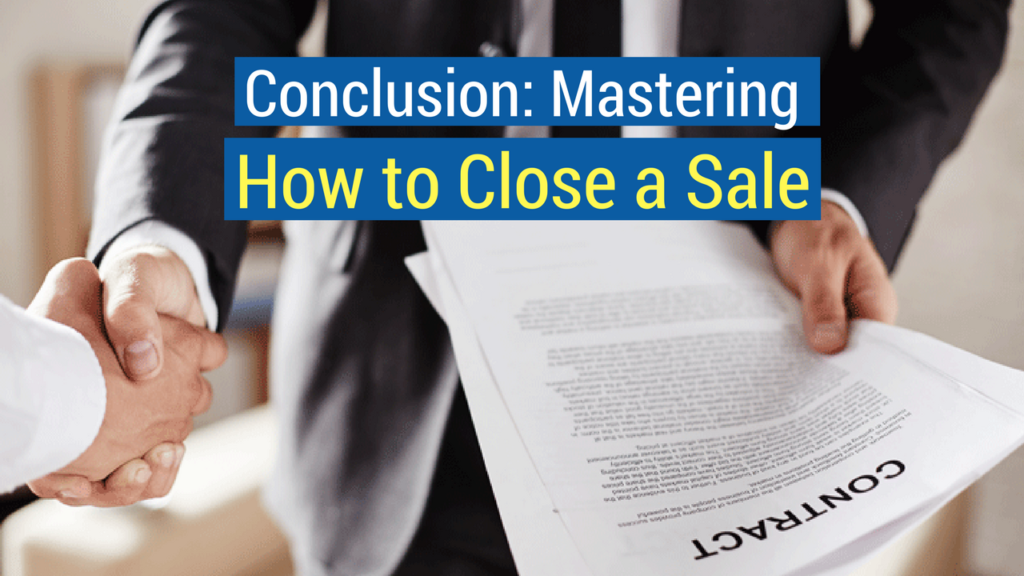
Get rid of your bad sales habits—and embrace these new ones—to avoid losing clients over avoidable mistakes.
In this article, we’ve covered the 7 most common reasons why clients don’t buy from salespeople.
Chances are, you can relate to most, if not all, of these top selling mistakes.
The good news is that you can master how to close a sale with just about any prospect, in any industry, no matter your experience level—if you simply recognize your mistakes and embrace better sales habits.
First and foremost, get clear on who your ideal clients are—and only sell to those prospects who fit the bill.
Next, be sure to drop the over-the-top sales enthusiasm that puts prospects on guard and loses you sales that you otherwise might have closed. Likewise, you need to make pitching your product a thing of the past.
Prospects simply don’t care about your product or service. They only care about themselves.
That’s why it’s increasingly important that you dig deep to discover your prospects’ key challenges. If you don’t, you won’t be able to learn how to close a sale.
And while talking about budget can be scary, you must feel the fear and do it anyway. Getting your prospect’s budget is critical to closing any sale, and you must do it before you present your solution.

Finally, remember to schedule a clear next step after every selling interaction. Failing to do this is one of the biggest—and most avoidable—mistakes you can make in sales.
So, you’ve just learned how to close a sale by avoiding the top 7 reasons that clients don’t buy from you. I want to hear from you. Which of these ideas did you find most useful? Be sure to share below in the comments section to get involved in the conversation.
Enjoyed this article? Please share away!

Get instant access to our free sales training:
Why Prospects Push Back on Price, Give 'Think-It-Overs,' and Ghost in Sales Until They Meet a Sales Superstar Who Is Following These 7 Simple Keys

About the Author Marc Wayshak
Marc is is the best-selling author of three books on sales and leadership, including the highly acclaimed titles Game Plan Selling, The High-Velocity Sales Organization and his forthcoming book, Sales Conversations, Mastered.
Marc is a contributor to Inc, HubSpot, Fast Company, Entrepreneur Magazine, and Huffington Post Business. He also hosts a popular YouTube channel on sales strategy with over 103,000 subscribers.
Marc helps thousands of people his data-driven, science-based approach to selling that utilizes all the best tools available to sales organizations today.

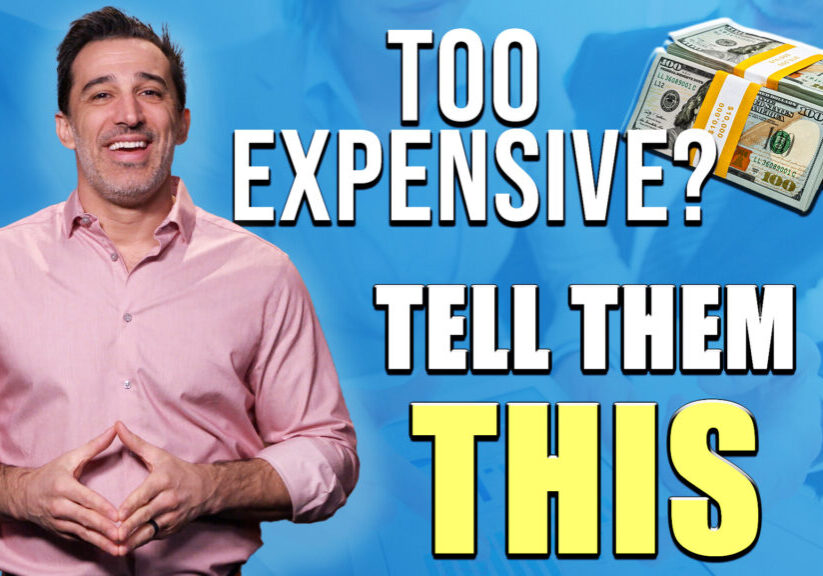
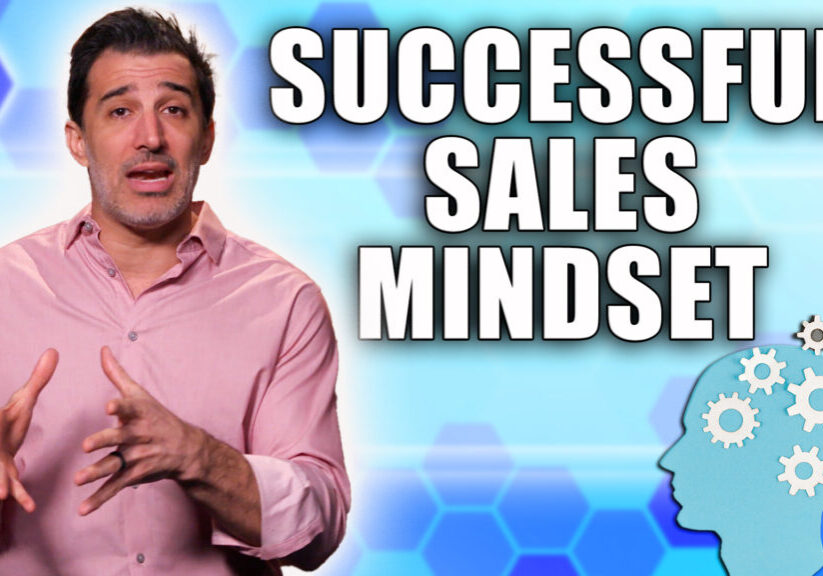
![How-to Sell to Power [C-Suite Sales Must-Knows!] How to Sell to Power [C-Suite Sales Must-Knows!]](https://salesinsightslab.com/wp-content/uploads/bb-plugin/cache/How-to-Sell-to-Power-C-Suite-Sales-Must-Knows-1024x576-landscape-7a52c541b28a7b772ad9e1010d8240be-.jpg)
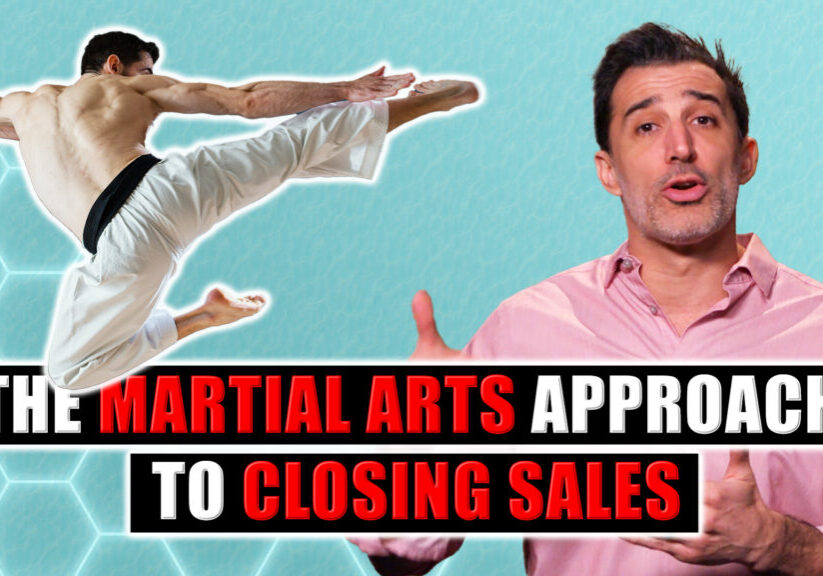
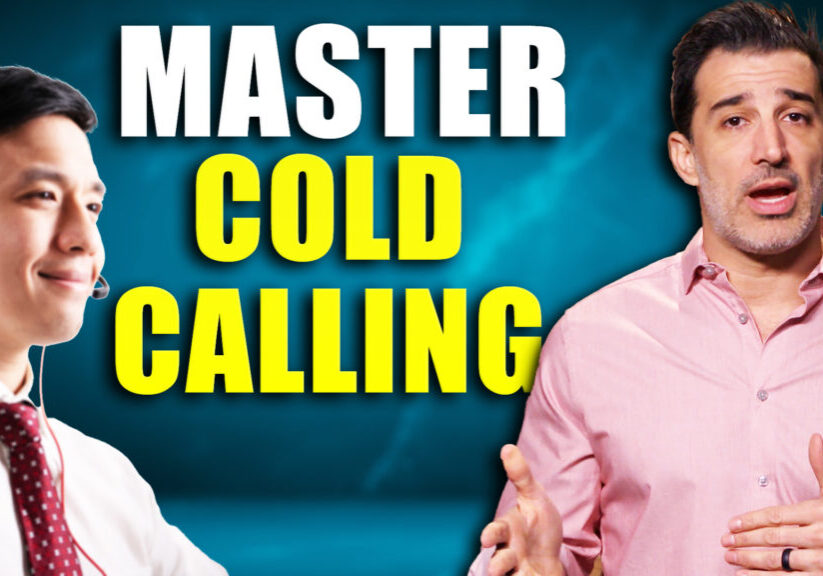
![The Absolute Best Way to Start a Sales Conversation [WITH ANY PROSPECT] The Absolute Best Way to Start a Sales Conversation [WITH ANY PROSPECT]](https://salesinsightslab.com/wp-content/uploads/bb-plugin/cache/The-Absolute-Best-Way-to-Start-a-Sales-Conversation-WITH-ANY-PROSPECT-1024x576-landscape-be9d9379ab94d9f71b5bfeed42246a84-.jpg)